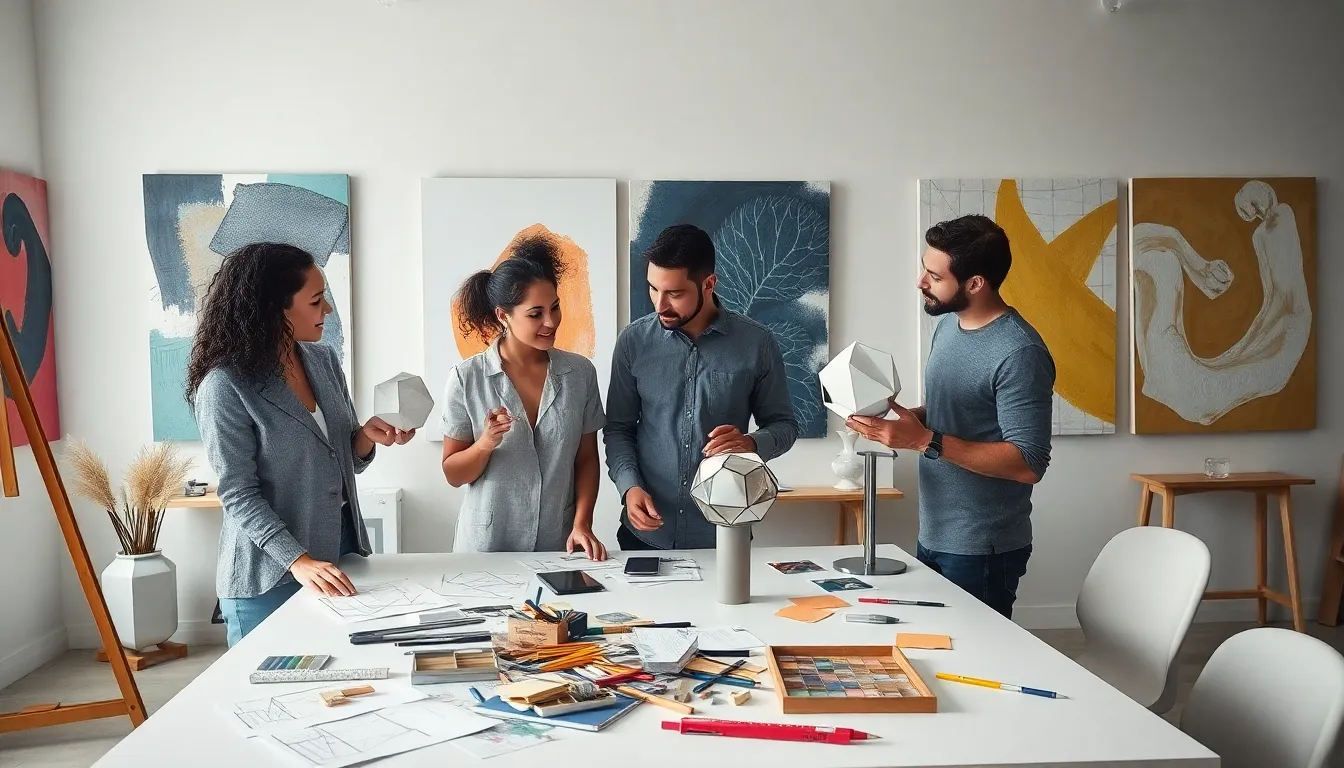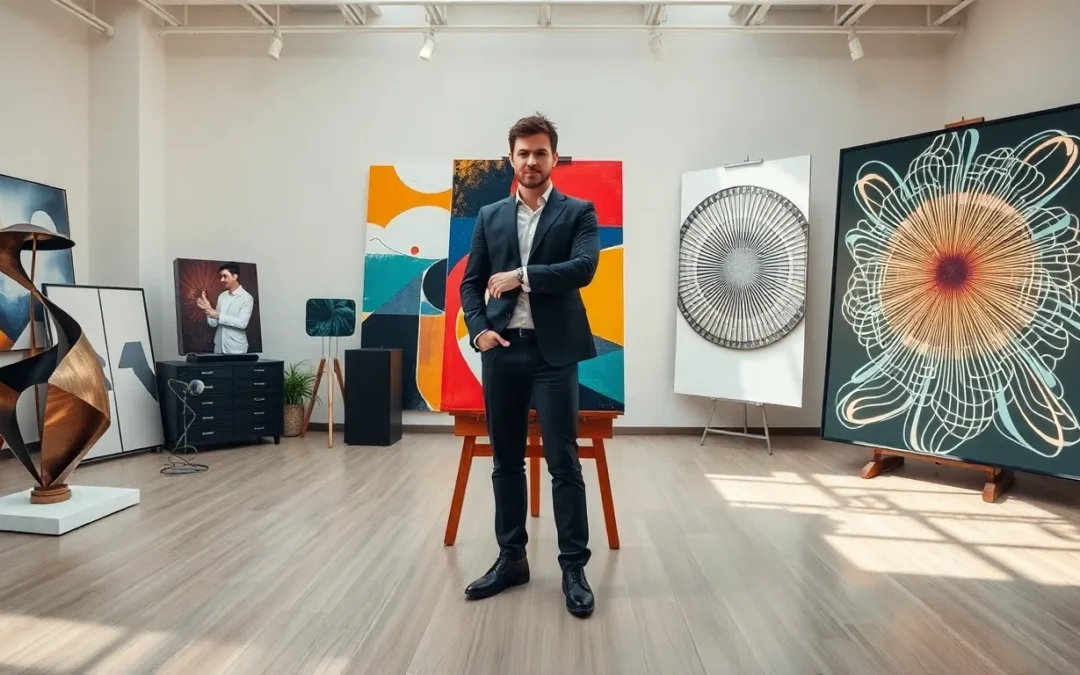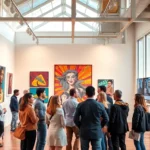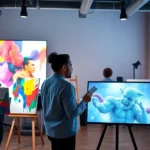When you think about art, what comes to mind? Maybe it’s a splash of color or a brushstroke that speaks to your soul. But let’s be honest: without structure, a masterpiece could easily turn into a chaotic mess. Just as a house needs a solid foundation, art relies on structure to engage and inspire. In this exploration of ‘structure in art,’ we investigate deep into what makes art resonate, laugh at a few artistic quirks along the way, and open your eyes to how crucial this backbone is in every stroke and sculpture. Let’s immerse.
Structure In Art

Elements Of Structure
Structure in art essentially revolves around key elements that frame a piece. Think of it as the skeleton that allows the flesh of creativity to flourish. Here are some vital components:
- Line: This is the most basic element and can lead the viewer’s eye. Straight, curved, thick, or thin, lines create boundaries and connections within art.
- Shape: Combining lines gives us shapes, which can be geometric or organic. These shapes interact, dictating how art is perceived.
- Form: While shapes exist in two dimensions, form adds the third dimension, creating volume. Sculptures, for instance, rely heavily on this element.
- Color: Colors evoke emotions and help reinforce structure. A vivid red can lead to excitement while a muted blue creates calm.
- Texture: This can be actual or implied. It adds depth and interest and can affect how viewers experience the artwork physically and emotionally.
Compositional Techniques
Plus to these elements, compositional techniques play a crucial role in establishing structure. Artists use various methods to guide viewers through their works.
- Rule of Thirds: Dividing the canvas into three equal horizontal and vertical sections creates focal points where interest naturally lies.
- Balance: Symmetrical or asymmetrical balance enhances visual appeal. Just like a well-balanced diet, a well-balanced piece is pleasing to the eyes.
- Contrast: This allows different elements of structure to stand out. Light against dark or large shapes against small ones can create a dynamic effect.
- Rhythm: Just as music possesses rhythm, art can have a visual rhythm. Repeated elements can lead the viewer through a piece, creating movement.
These elements and techniques come together to create a structured piece that speaks volumes beyond its original intention.
Historical Context Of Structure In Art
Influential Art Movements
Throughout history, various artistic movements have brought new interpretations of structure. Each one reflects the era’s cultural values and technological advancements.
- Renaissance: This period brought a newfound interest in balance and proportion, with artists like Leonardo da Vinci and Michelangelo emphasizing the human form’s structure. Their works instilled a harmony that has influenced countless artists since.
- Baroque: In contrast, the Baroque period introduced drama through exaggerated structure. Artists like Caravaggio used stark contrasts and bold lines to enhance emotional impact.
- Cubism: Pioneered by Picasso and Braque, Cubism fractured traditional ideas of structure, presenting subjects from multiple viewpoints. This radical departure encouraged a deeper exploration of perspective and form.
- Modernism: The 20th century saw artists break further from tradition, experimenting with structure in unconventional ways. Abstract artists prioritized innovative forms as opposed to representation.
Histories of structure showcase how art evolves alongside societal changes, forever reflecting the collective experience through new lenses.
Cultural Differences In Structure
Modern Interpretations Of Structure
As the art world continues to evolve, so do interpretations of structure across cultures. Different societies have unique ways of expressing structured ideas, and this diversity enriches the global art landscape.
- Eastern Art: Traditional Eastern philosophies tend to emphasize harmony and balance with nature. Here, the structure may reflect fluidity, focusing less on rigid forms and more on graceful lines and natural rhythms.
- Indigenous Art: Many indigenous cultures create pieces that tell stories, often employing circular structures and repeating motifs. These artworks can serve communal purposes, connecting people with their heritage.
- Contemporary Western Art: In contrast, contemporary Western artists might challenge established notions of structure. Utilizing technology and experimental forms allows for a breaking down of boundaries, questioning what structure means in a rapidly changing world.
In every context, structure seems to serve as both a guideline and a platform for innovation, offering a framework for cultural storytelling.
The Role Of Structure In Contemporary Art
Analyzing Structure In Various Mediums
Contemporary art manifests in countless forms, and understanding structure helps demystify the seemingly chaotic. Whether you’re observing a painting, sculpture, installation, or digital art, the role of structure is critical.
- Painting: In contemporary painting, artists often deconstruct traditional perspectives, inviting viewers to engage with the canvas in new ways. For instance, abstract expressionists may use drips and splatters that rely on spontaneity rather than structured composition. Yet, underlying this chaos is intentionality, every line has a purpose.
- Sculpture: Modern sculptors manipulate materials, from metal to paper, in search of new structures. Works by artists like Anish Kapoor challenge expectations by defying gravity while maintaining balance. These striking forms change the viewer’s perception of space.
- Installation Art: This medium often encompasses entire rooms, requiring unique structural considerations. Artists like Yayoi Kusama create immersive environments that envelop viewers, transforming the space into an experience.
- Digital Art: Finally, with technology leading the charge, digital artists explore structure through algorithms and coding. The resulting pieces can be fluid or grid-like, exploring how structure interacts with time and movement.
Contemporary art’s embrace of structure demonstrates its adaptability, proving that constraints often fuel creativity rather than hinder it.











